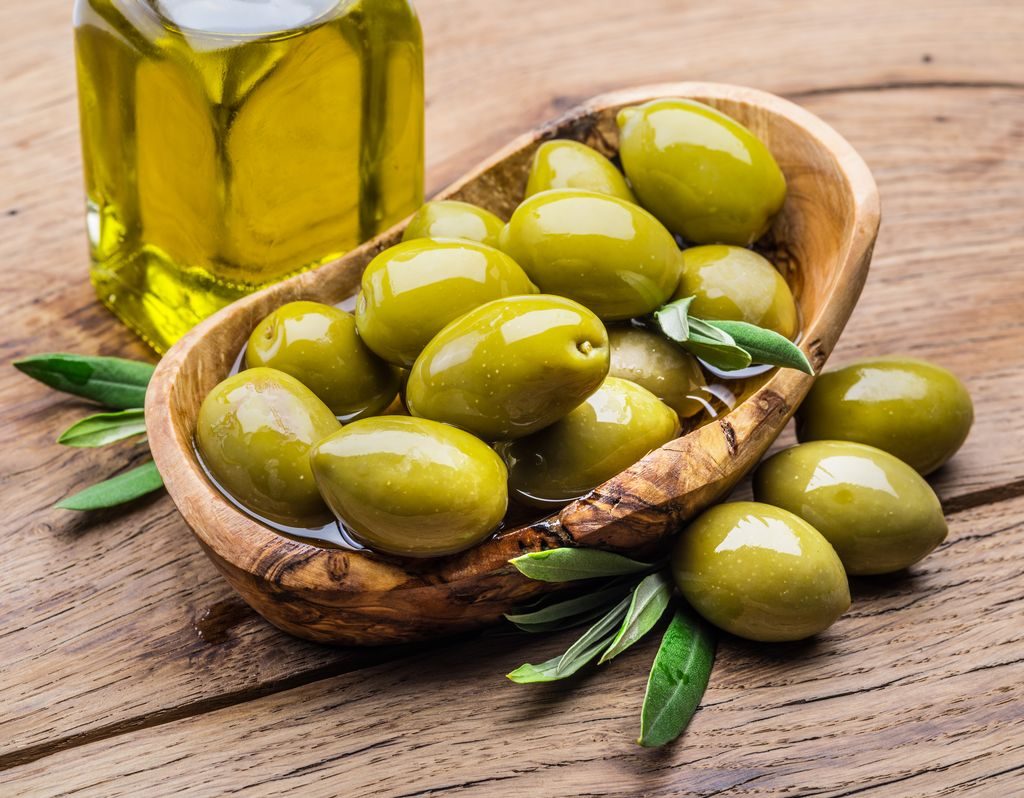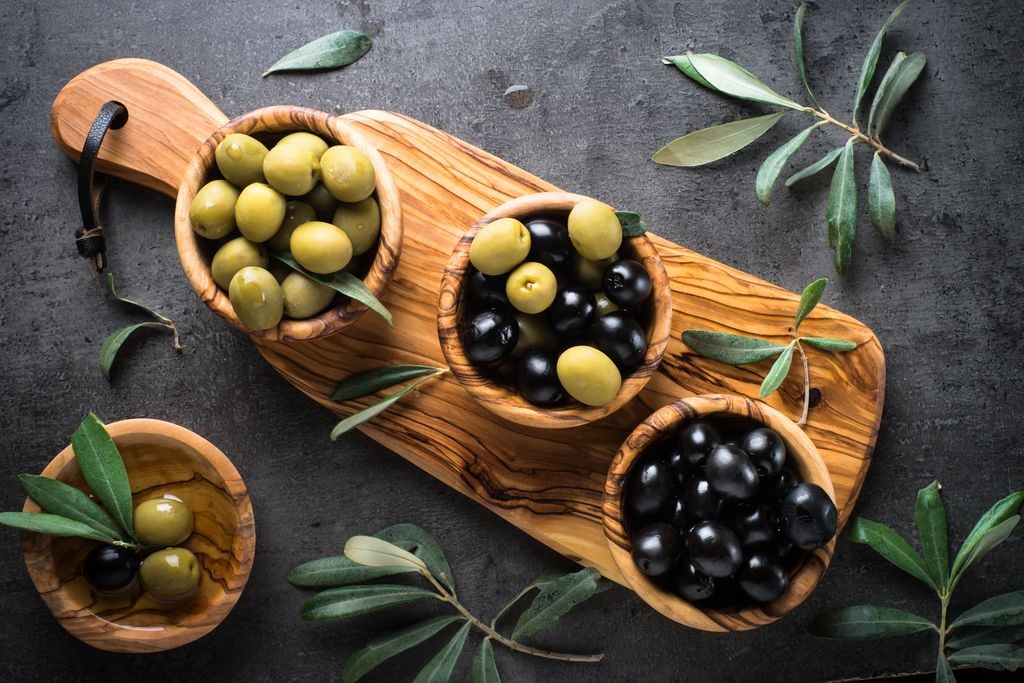Green olives
Not only are green olives delicious but they contain numerous held benefitting qualities you need to know about!

Green olives are small fruit native to the Mediterranean. Most olives cultivated are used to make olive oil, while the rest are preserved. Green olives are either used as an ingredient or eaten as a snack. Raw olives are extremely bitter and are inedible.
Green olives come in many shapes and sizes, they are usually round or oval-shaped with a hard stone (pit) in the centre, they are sometimes pitted and stuffed with things like peppers and garlic.
Olives feature heavily in many Mediterranian cuisines; they are used in salads, to top pizzas, in bread like focaccia, pasta sauces, stews or eaten on their own as part of an antipasto.
Olives are also used to make tapenade which is an Italian dipping sauce. There’re many different variations but it usually contains olives, capers, salted anchovies and garlic finely chopped and topped off with olive oil.
Olives can be cured in brine, water, in salt and with lye. After cured or fermented olives are sold marinated in wine vinegar, olive oil or dry salted. They are either sold in jars or canned and last 12 to 18 months once opened if kept in the refrigerator.
What’s the difference between green and black olives?

Green olives usually firmer and they have a slightly more bitter taste. However, the flavour and the texture can change depending on the curing process and how long its cured for.
Many people would be surprised to learn that green and black olives come from the same tree!
The difference in colour is due to the ripeness on the olive and the processing methods used. Green olives are picked in October or November. Black olives are picked later in the year in December when they are fully ripe.
When harvested both green and black olives are submerged in brine for about 12 months. They ferment in this time developing their flavour and making them edible.
Some olives (usually the one you get in cans) are cured with lye before cured in brine to speed up the process. Some canned black olives are actually dyed green olives, they tend to be quite tasteless in comparison to naturally cured olives.
Green and black olives are very similar nutritionally but green olives tend to have a higher salt content.
Nutritional information of olives
Green olives are widely praised for their health benefits as they are loaded with vital nutrients. It is important to remember that the nutritional value may differ depending on how the olives are cured, flavours and packaged. For more information please consult the label.
There are about 115 calories per 100 grams of olives. Olives are a great low-carb snack. They are made up for 4-6% carbohydrates of which most is fibre.
Olives are rich in the monounsaturated fat ‘oleic acid’ making olives keto-friendly. The total fat content is about 11-15%. Some studies have concluded that oleic acid can decrease inflammation and reduce your risk of developing heart disease as it helps lower your cholesterol levels.
Green olives are very high in vitamin E, vitamin A, iron, copper and calcium.
Olives are widely considered a ‘superfood’. This is largely to do with their antioxidant and anti-inflammatory properties. Olives contain an antioxidant called hydroxytyrosol, this is known to be a strong anti-inflammatory.
Consuming olives while pregnant is completely safe. They are rich in antioxidants which may help to protect your child from developing some allergies and asthma.
Recipe suggestions: Focaccia




